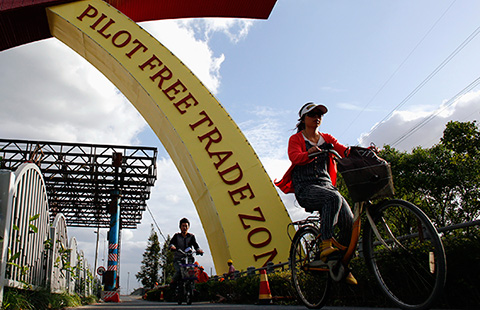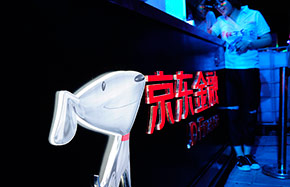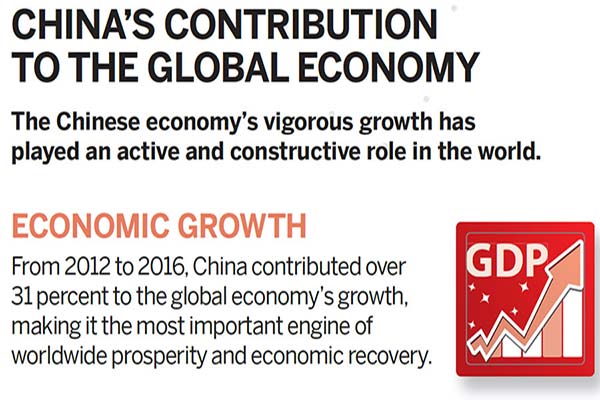Putting glitter back into gold biz
 |
|
Estella Ng, deputy chairman, chief strategy officer and chief financial officer of TSL Group. [Photo/China Daily] |
Estella Ng drives strategic change at HK jeweler TSL as consumer preferences evolve
If you are a Chinese consumer who buys gold and jewelry infrequently, chances are high you may have found yourself mulling fresh purchases frequently of late, given the wider range of prices as well as purpose-specific products, a practice made popular by Hong Kong-based jeweler Tse Sui Luen Jewellery (International) Limited.
It is as if the jewelry market in China has assumed a new dimension, or strategy, if you will, to adapt to the changing profile of the typical consumer.
Appetite for gold, diamonds and jewelry among China's humongous, newly affluent middle class is strong. Younger consumers' tastes are different and changing.
TSL is changing too, to meet their demand. Leading that change is Estella Ng Yi-kum, TSL's deputy chairman, chief strategy officer and chief financial officer since 2015.
"We have widened the price range of our products. We are not just targeting the high-end products, we also have affordable products. People can come to our stores and buy something at very reasonable prices. It does not necessarily have to be for a wedding. The products could be something you can wear every day to work or just a small gift for yourself," said Ng.
In Hong Kong, TSL now sells lighter and smaller diamonds to attract young consumers, so that they can buy a small diamond ring or a pair of diamond-studded earrings and wear them to work.
Around 22 percent of TSL's output is gold products. The rest are jewelry, including the diamond-studded variety. TSL is cooperating with international designers to launch cross-over products.
Ng also oversees TSL's e-commerce, which was launched in 2015 and accounted for a fraction of overall sales then. From about HK$5 million ($645,000) in the first year, its share surged to HK$40 million in the second year.
She believes e-commerce has a lot of potential to grow, thanks to the huge market demand and it being perceived as trendy. Currently, e-commerce accounts for about 3 percent of the company's total turnover. The target is to increase it up to 10 percent in the next few years.
There are bigger goals that she has set for TSL against a backdrop of stiffer challenges.
With the Chinese mainland's economic growth rate slowing, and fewer mainland tourists visiting Hong Kong, the retail market in the city has been sluggish over the past few years.
Ng believes the general environment for the Hong Kong retail industry will continue to be difficult this year. So, the mainland market will continue to be TSL's growth engine.
The mainland accounts for more than 60 percent of the company's operations. In the next two years, around 100 TSL franchise stores are scheduled to be opened in the mainland, which will strengthen the 316-store chain (115 franchises and 201 self-operated stores).
"The ratio of self-operated stores and franchise stores is 2:1. For every franchise store, there are two self-operated stores. In a few years down the road, the franchise stores will account for 70 percent of our total stores on the Chinese mainland. This means, the pace of opening new franchise stores on the mainland will be faster than that of opening self-operated stores."
As for Hong Kong, the company has maintained the number of stores at 26. But, since 2015, the business strategy has changed. Some of the stores at tourist-frequented centers have been relocated to strategic areas like key metro train station neighborhoods, important residential colonies and mass market spots.
Now, around half of TSL's stores in Hong Kong are at tourist spots and the rest target the mass market.
Ng's previous executive roles helped her in effecting big changes at TSL without too much organizational disruption. She had held senior management positions at large property developers for over a decade. During that time, she learned that whenever there is risk, opportunity is not far behind.
That insight applies to retail as well, she said. "Despite a good market situation, companies could still go bankrupt. And during bad times, good management and companies with a solid strategy can still make huge profits."
In this context, she may not have been talking about TSL though. According to its latest interim report, for the six months ended Aug 31, 2016, net profit dropped 24 percent year-on-year to HK$11.7 million on sales revenue of HK$1.55 billion, down 11.6 percent.
Ng stressed that 2016 was a very challenging year for the retail business as a whole. TSL performed relatively well, particularly in the Chinese mainland, which has recorded a decent 1.5 percent year-on-year growth in terms of same-store sales.























